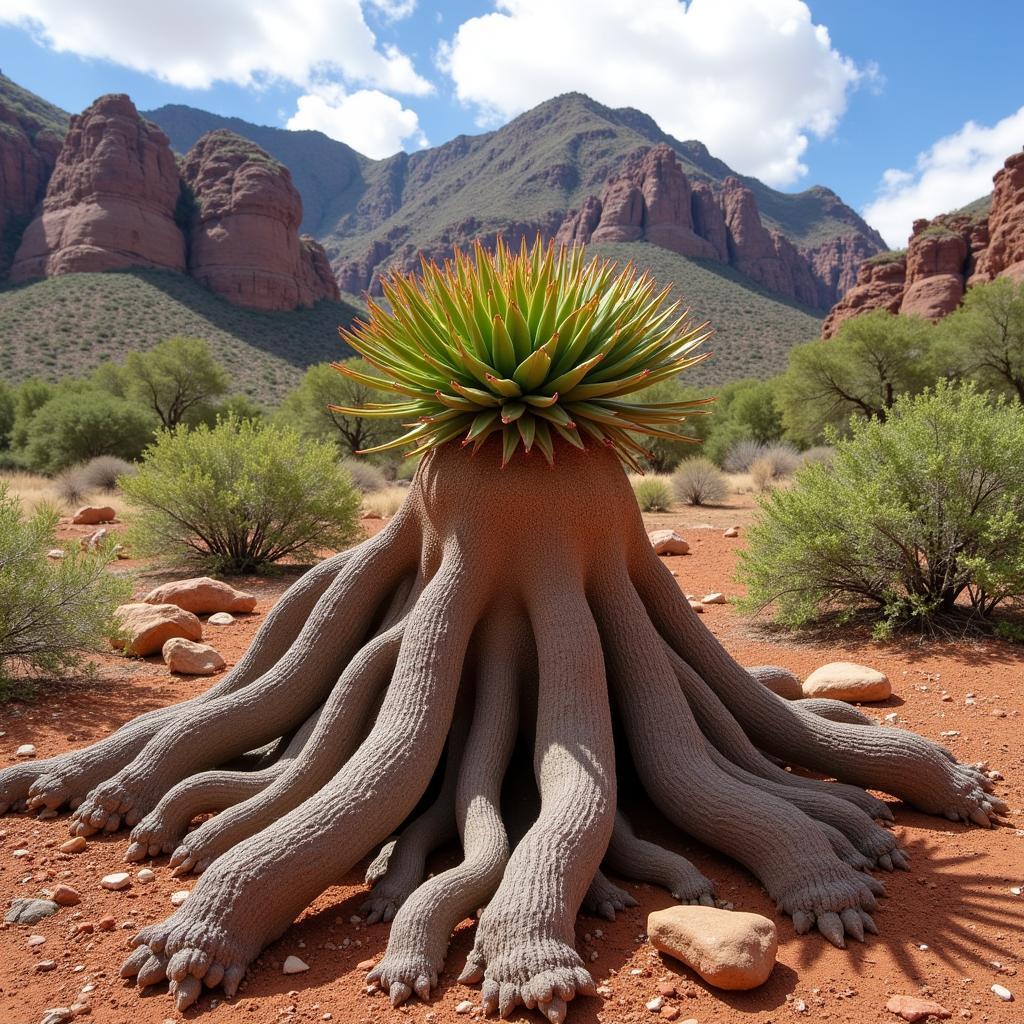Adenium Multiflorum: A Deep Dive into These Stunning African Flowers
Adenium multiflorum, also known as the Impala Lily or Sabi Star, is a captivating succulent shrub native to Southern Africa, renowned for its vibrant, showy flowers. These winter-blooming beauties, ranging from pure white to deep crimson with contrasting markings, are a true testament to the diverse and stunning flora of the African continent. Let’s explore the fascinating world of Adenium multiflorum, delving into its cultivation, care, and significance in African culture.
Unveiling the Beauty of Adenium Multiflorum
Adenium multiflorum belongs to the Apocynaceae family, also known as the dogbane family. This slow-growing succulent is deciduous, shedding its leaves in winter before erupting in a spectacular display of blossoms. The striking flowers are trumpet-shaped, often with a darker throat and intricately patterned petals. The plant’s swollen caudex, a thickened stem base that stores water, adds to its unique and appealing appearance. These plants thrive in arid and semi-arid regions, perfectly adapted to withstand drought conditions. Adenium multiflorum’s hardiness and breathtaking beauty make it a highly sought-after ornamental plant worldwide.
Cultivating and Caring for Adenium Multiflorum: A Comprehensive Guide
Successfully cultivating Adenium multiflorum requires understanding its specific needs. These succulents thrive in well-draining soil, crucial to prevent root rot, a common issue in overly moist conditions. Full sun exposure is essential for optimal blooming and robust growth. While they are drought-tolerant, regular watering during the growing season promotes healthy development. However, allow the soil to dry out completely between waterings to avoid overwatering. During winter dormancy, reduce watering significantly, as the plant requires less moisture. Propagating Adenium multiflorum is typically done through seeds or cuttings, with each method offering its own unique challenges and rewards.
 Adenium Multiflorum in its Natural Habitat
Adenium Multiflorum in its Natural Habitat
The Significance of Adenium Multiflorum in African Culture
Beyond its ornamental value, Adenium multiflorum holds cultural significance in certain African communities. Traditionally, extracts from the plant have been used in various applications, including arrow poisons for hunting and fishing. Its potent properties underscore its importance as a resource within these cultures. Furthermore, the plant’s resilience and striking beauty have likely earned it symbolic meaning, although specific cultural references require further investigation. The captivating allure of Adenium multiflorum extends beyond its aesthetic appeal, connecting it to the rich tapestry of African traditions and practices.
What makes Adenium Multiflorum different from other desert roses?
Adenium multiflorum stands out from other desert roses due to its profuse winter blooming, often displaying a greater abundance of flowers than other Adenium species. The intricate patterns and varied color combinations of its blooms further distinguish it, making it a particularly prized ornamental plant.
How do I propagate Adenium Multiflorum from seed?
Propagating from seed offers the advantage of greater genetic diversity. Soak the seeds in warm water for a few hours before sowing in a well-draining seedling mix. Maintain warmth and moisture until germination, then gradually introduce the seedlings to increased sunlight.
A Timeless Symbol of African Beauty
Adenium multiflorum, with its captivating beauty and cultural significance, remains a true gem of the African continent. Whether gracing gardens worldwide or playing a role in traditional practices, these stunning african flowers continue to fascinate and inspire. By understanding its specific needs and appreciating its unique qualities, we can ensure the continued appreciation and preservation of this remarkable plant for generations to come.
FAQ
- Is Adenium multiflorum poisonous? Yes, all parts of the plant are considered toxic and should be handled with care.
- When does Adenium multiflorum bloom? It typically blooms during winter, after shedding its leaves.
- How often should I water my Adenium multiflorum? Water regularly during the growing season, allowing the soil to dry out completely between waterings. Reduce watering significantly during winter dormancy.
- Can Adenium multiflorum tolerate frost? No, it is sensitive to frost and should be protected from freezing temperatures.
- How do I prune my Adenium multiflorum? Pruning can be done to shape the plant or remove dead or damaged branches.
- What is the best soil for Adenium multiflorum? A well-draining soil mix is essential to prevent root rot.
- How do I fertilize my Adenium multiflorum? Use a balanced fertilizer during the growing season, following the package instructions.
If you need any support, please contact us at Phone: +255768904061, Email: [email protected] Or visit our address: Mbarali DC Mawindi, Kangaga, Tanzania. We have a 24/7 customer support team.
